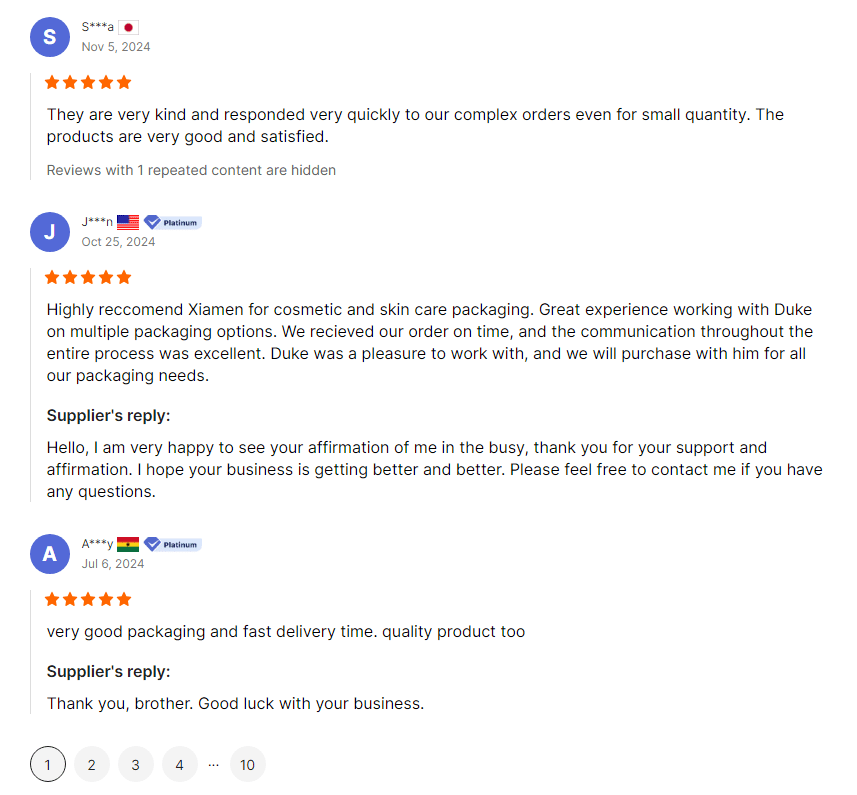Aromatherapy bottles
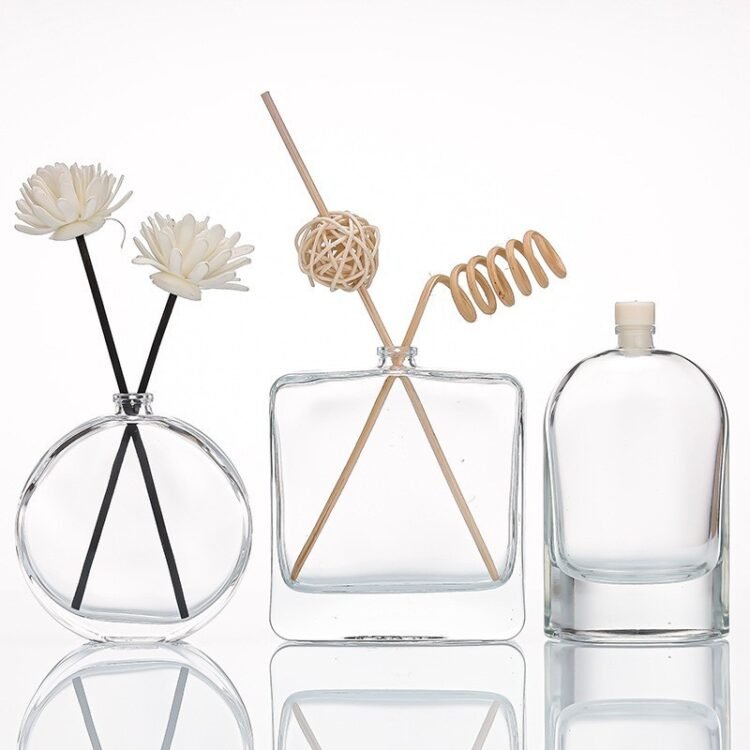
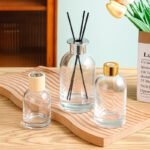
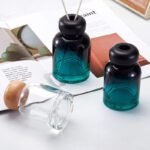
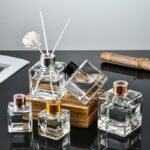

We have over 200 different shapes of Aromatherapy bottles, which are sold all over the world and are loved by consumers.Generally, they come in colors such as Clear. We can also customize the color according to your requirements.
| Name | Aromatherapy Bottles |
|---|---|
| Capacity | 30ml/40ml/50ml/70ml/80ml/90ml/100ml/110ml/120ml/ 140ml/150ml/180ml/200ml/250ml/300ml/350ml/500ml/1000ml |
| Color | Clear/Custom |
| LOGO | Can customize |
| Industrial Use | Perfume/Aromatherapy |
| Material | Glass |
| Surface printing | Screen Printing, Hot Stamping, Label, frosted, etc |
Detailed Product information
Glass perfume bottles are meticulously crafted vessels that blend artistry with functionality. Their transparent nature allows the fragrance’s color to shine, enhancing visual allure while protecting delicate oils from light degradation. Designers employ techniques like hand-blowing, etching, or stained-glass effects to create unique textures—frosted finishes evoke elegance, while geometric cuts modernize classic shapes. Luxury brands often use heavy, lead-free crystal glass with gold-plated caps for opulence, whereas minimalist brands opt for sleek, recyclable glass aligned with sustainability. The bottle’s silhouette also serves as a brand signature: Chanel’s No. 5 rectangular bottle symbolizes timelessness, while Jo Malone’s apothecary-style jars emphasize simplicity. Beyond aesthetics, ergonomic spray mechanisms and airtight seals ensure precise application and longevity. In niche perfumery, limited-edition bottles feature hand-painted motifs or collaborations with artists, transforming them into collectibles.
The perfume industry is reimagining glass bottles to reduce environmental impact. Brands like L’Occitane and Hermès use refillable systems, where customers replenish fragrances via eco-designed pouches or dedicated stations, cutting glass waste by 75%. Recycled glass (cullet) is now mainstream, with manufacturers melting post-consumer glass at lower temperatures to shrink carbon footprints. Innovations include lightweighting—thinner walls without compromising durability—and biodegradable soy-based inks for labels. Startups like Vyrao embed crystals in bottles for “energy-infused” fragrances, catering to wellness trends. Meanwhile, 3D-printed glass prototypes enable hyper-customization, allowing buyers to co-design bottles via apps. Regulatory pushes, like the EU’s 2025 Single-Use Plastics Directive, further drive glass adoption, as it’s infinitely recyclable. However, challenges persist: colored glass is harder to recycle, and transport emissions remain high due to weight. Solutions like localized production and return-for-reward programs are gaining traction, positioning glass bottles as both heritage objects and pioneers of green luxury.
1-Product Specification
- Soda-lime glass in flint or amber/clear/blue/green/black color
- Full automatic inspection system and independent lab analysis
- Shrink wrapped and strong corrugated carton or pallet
- Industrial use:Perfume
2-Product Specification
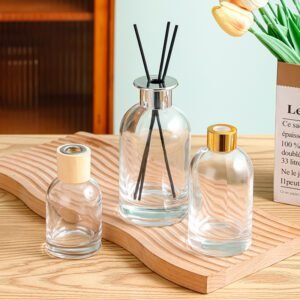
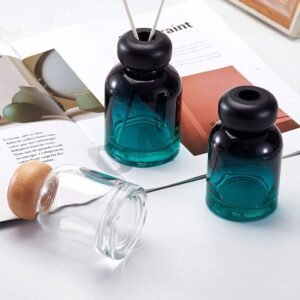
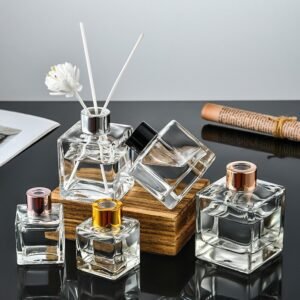
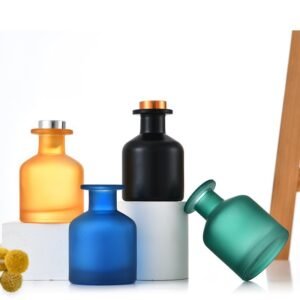
3-Processing & Production
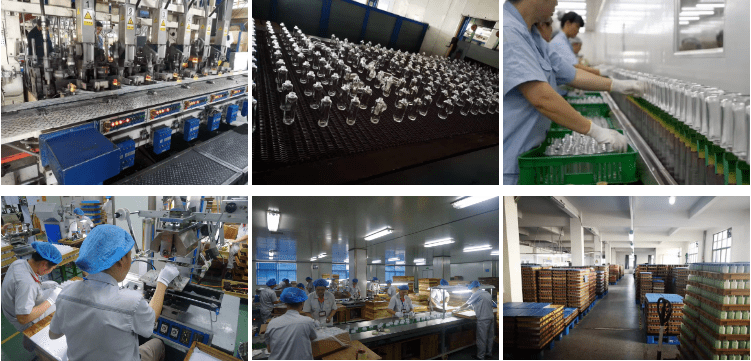

4-Packing photo
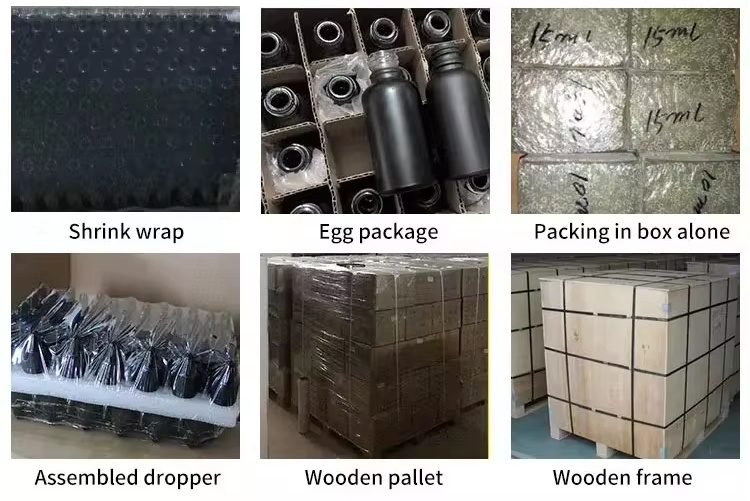
5-Real customer evaluation
